
A History of Buffalo's Grain Elevators................ Grain Elevators - Table of Contents
Buffalo's Demolished Grain Elevators
Buffalo, NY
On this page, below:
| Bennett Cargill C. J. Wells Dakota Dart Eastern Electric Evans |
Floating elevator H-O Oats Kellogg Lyons Reed Richmond Union |
Washburn Crosby Watson Wells Wilkeson Wollenberg See also: 1863 map on display at the Buffalo History Museum |
Bennett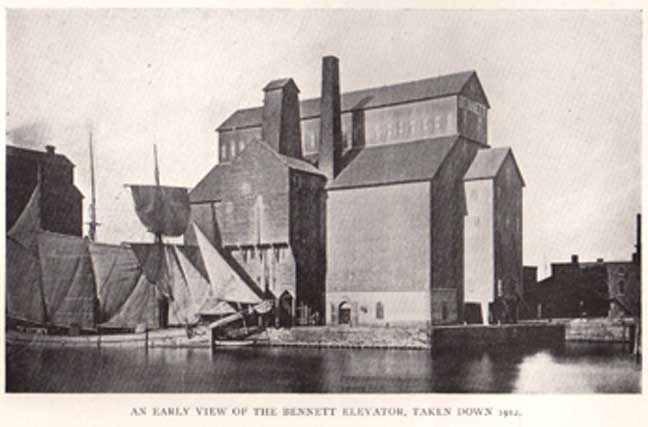 Bennett Source: The Picture Book of Earlier Buffalo, Frank H. Severance, ed. Buffalo Historical Society Publications, Vol. 16, 1912, p. 38 (Digitized) "After the Dart Elevator was destroyed by fire, the Bennett Elevator was built on its site. Located at the foot of Commetcial Street, the elevator was the watchdog of the Buffalo harbor." - The Grain Elevators (online April 2013) |
Cargill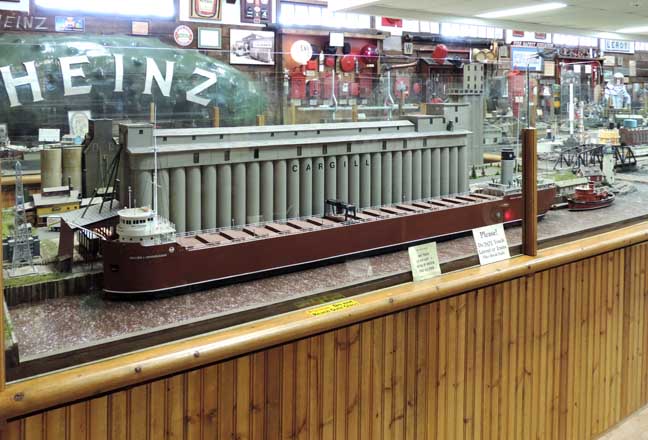 Model on display at the Medina Railroad Museum in 2013 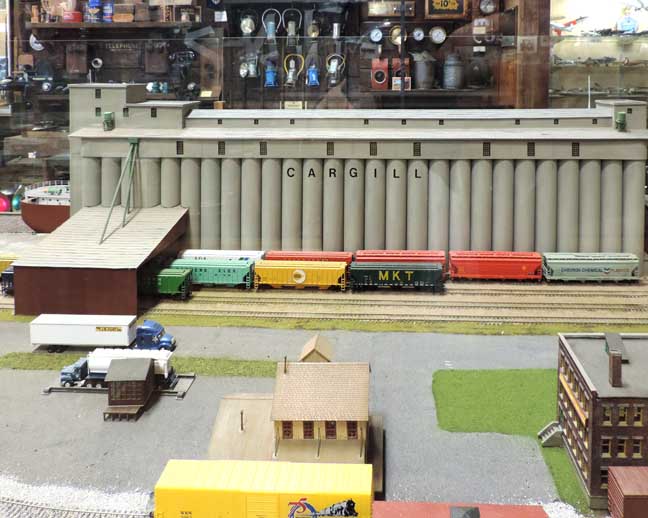 Model on display at the Medina Railroad Museum in 2013 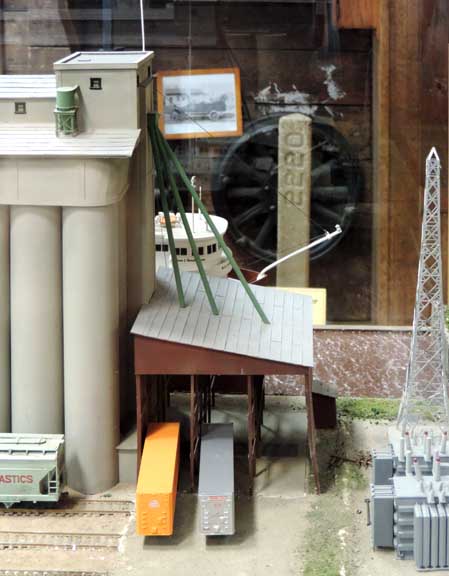 Model on display at the Medina Railroad Museum in 2013 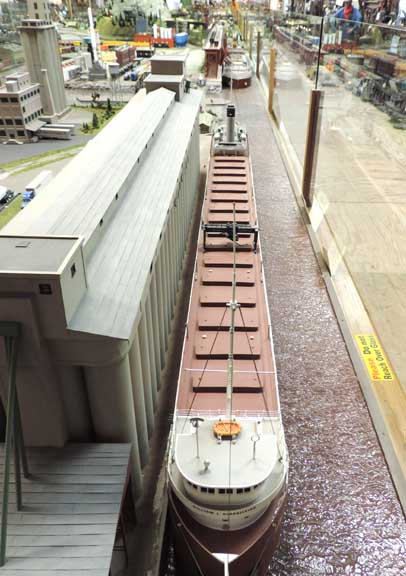 Model on display at the Medina Railroad Museum in 2013 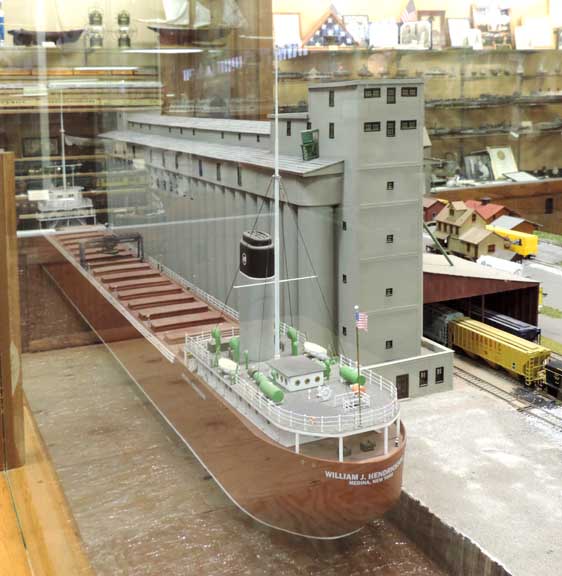 Model on display at the Medina Railroad Museum in 2013 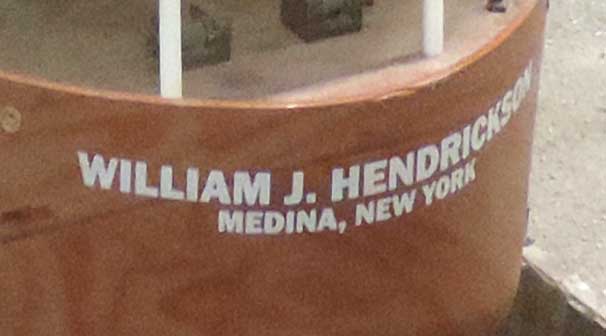 Ship's name. Model on display at the Medina Railroad Museum in 2013 |
| C. J. Wells See: Historic Photos - Industrial Heritage Trail Signage |
Dakota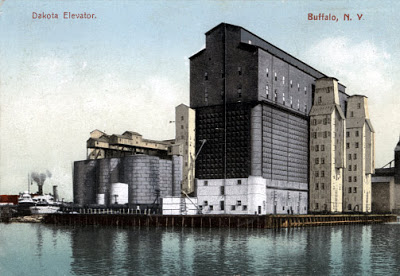 Dakota - Postcard See: Historic Photos - Industrial Heritage Trail Signage |
Dart Dart Model of Dart's wooden elevator. Source: Display at the Buffalo History Museum |
Eastern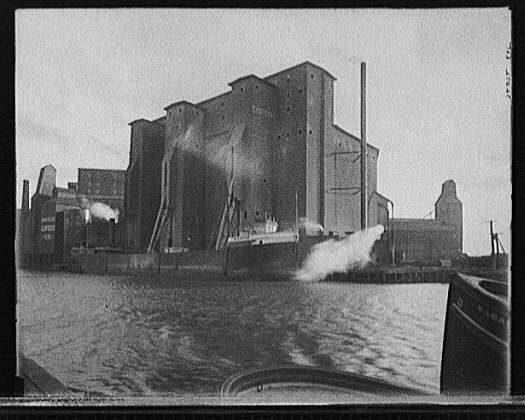 Eastern Source: Wikimapia (online April 2013)  Eastern Source: Wikimapia (online April 2013) 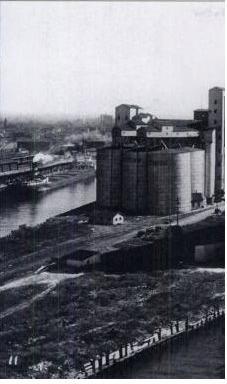 Eastern Source: Wikimapia (online April 2013) "The original Eastern Elevator was
a wooden grain elevator with two marine legs built in 1895 on this
location at the tip of Kelly's Island. Sold by its owners to the
American Linseed Oil Company in June 1900, the elevator was fully
loaded with over $400,000 worth of grain when it suffered a grain dust
explosion and fire on the night of July 23rd, 1900. The fire consumed
the entire structure and its contents, costing its new owners and their
insurers some $750,000, which quickly folded their enterprise.
"After the site of the former
elevator was cleared of debris, the highly valuable land was quickly
purchased by the Great Eastern Elevator Company, who contracted the
architecture firm of Harry R. Wait to design a pioneering steel-binned
grain elevator. Constructed by the Steel Storage and Elevator
Construction Company and the Indiana Bridge Company, the Great Eastern
Elevator was completed in 1901 and featured 68 separate steel tanks
which could store 2.5 million bushels of grain. The elevator was
supplied primarily by lake freighters, and had two marine legs to
offload vessels alongside the elevators Buffalo River dock.
"Great Eastern operated their elevator successfully for thirty years before the Great Depression put the company in dire financial straits, allowing its purchase by the multi-national grain conglomerate Cargill in 1936. Cargill elected to retain the Great Eastern name on their new facility, and operated it through the Second World War before they idled the facility in 1947. With the Great Eastern elevator in need of major upkeep and repairs, Cargill chose to focus their operations at their Superior and Pool elevators in Buffalo rather than the Great Eastern, and in the winter of 1948 the Great Eastern was demolished. "Today the former site of the Great Eastern Elevator is part of the General Mills facility, and is used for packaging and loading of tractor trailers." See also: |
Electric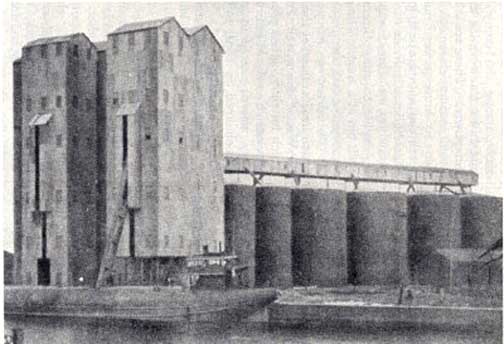 Electric Elevator ... Built in 1897 ... Bins made of free-standing and unenclosed steel Source: American Colossus: The Grain Elevator (online Jan. 2016)  Electric Annex Source: HABS "The Electric Elevator (demolished in 1984) stood adjacent to the Buffalo River and consisted of steel bins resting on concrete foundations with a tall, corrugated iron workhouse at the wharf end and a steel-frame horizontal transfer system for the distribution of grain above the bins. The bins, which had hemispherical bottoms to facilitate the flow of grain, rested above basement conveyor belts that carried grain to and fro below grade. "The most striking feature of the Electric Elevator's appearance to the eyes of people familiar with its wooden ancestors would have been its cylindrical bins standing completely exposed to view. For unlike earlier timber grain elevators, the Electric had no structure sheltering its bins from the elements. Exposed bins and machinery would become common practice for many later elevator builders. And the bin design itself departed from the rectangular shape of previous timber crib bins. Cylindrical bins, it was thought, were stronger than rectangular ones and were less likely to suffer damage when grain was emptied quickly from them. "Both of these aspects of the Electric's design–exposed bins and cylindrical silos - had their limitations in the minds of elevator engineers, but their use here definitely marked a new stage in elevator design and construction. "An experimental and transitional building of unusual form," Reyner Banham, the architectural historian who was the first to study Buffalo's grain elevators, declared of the bygone Electric. - Francis R. Kowsky, A History of Buffalo's Grain Elevators
|
Evans The Original Evans Elevator and Mills, on the Evans Ship Canal. Burned 1862 Source: The Picture Book of Earlier Buffalo, Frank H. Severance, ed. Buffalo Historical Society Publications, Vol. 16, 1912, p. 32 (Digitized) 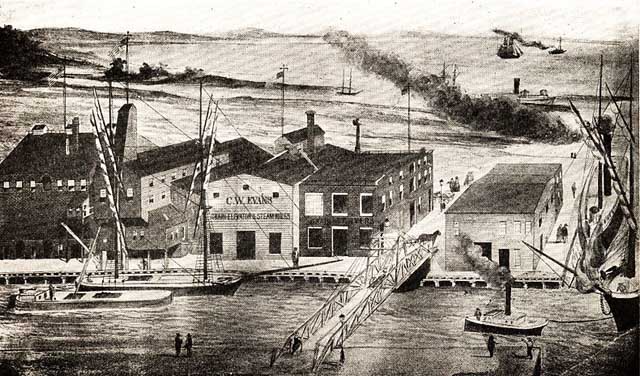 Evans Source: The Buffalo Express's 1916 booklet "Views of Old-Time Buffalo". Page 23, bottom. Caption: "The original Evans elevator and mills, on the Evans ship canal. Burned 1862." 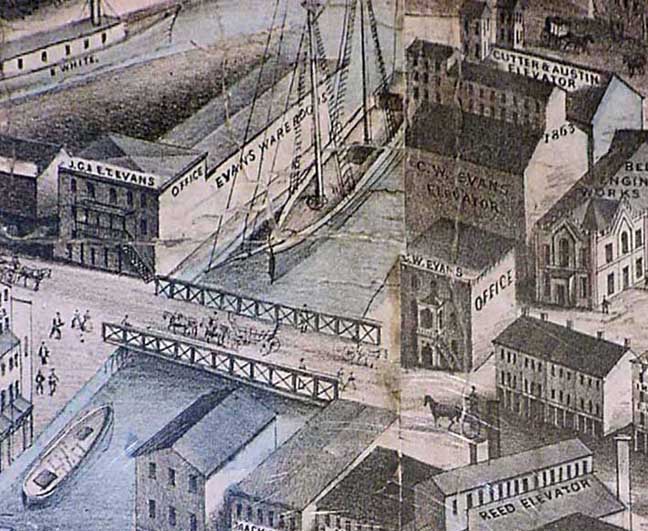 Evans Source: Map on display at the Buffalo History Museum |
Floating elevator Floating elevator |
H-O Oats H-O Oats Elevator 54 Fulton Street |
Kellogg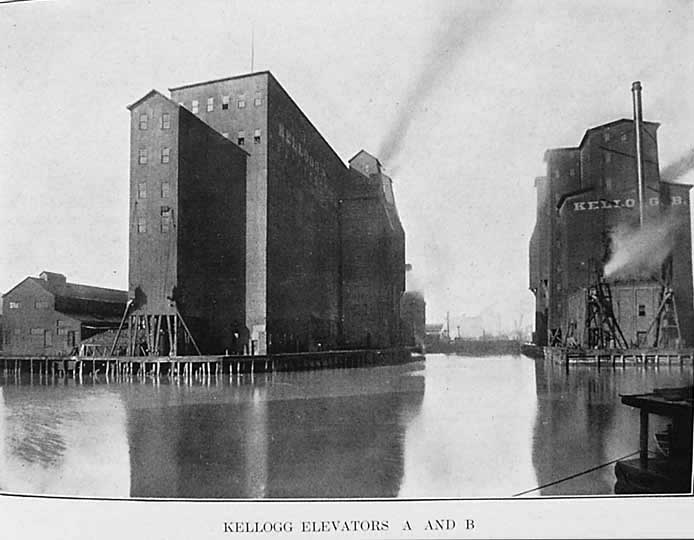 Kellogg Source: A History of the City of Buffalo, published by the The Buffalo Evening News, 1908 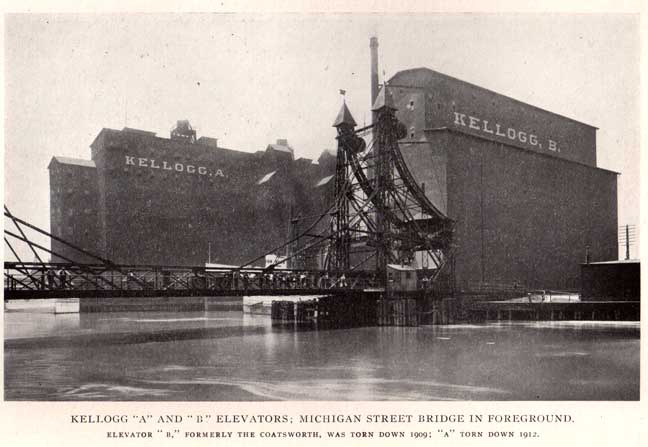 Kellogg Source: The Picture Book of Earlier Buffalo, Frank H. Severance, ed. Buffalo Historical Society Publications, Vol. 16, 1912, p. 42 (Digitized) See also:
|
| Lyons See: Historic Photos - Industrial Heritage Trail Signage |
Reed Reed Source: Robert Dennis Collection of Stereoscopic Views "Dunbar's Reed Elevator which was
described as "the most complete elevator in all its appointments in
Buffalo" when it went into operation in 1862, was probably the first to
have employed corrugated iron to protect its marine tower; the rest of
the exterior and the roof wore a shield of slate." - Francis R. Kowsky,
A History of Buffalo's Grain Elevators
|
Richmond Richmond Source: "Views of Old-Time Buffalo," pub. by The Express, Jan. 1, 1916, p. 23 |
Union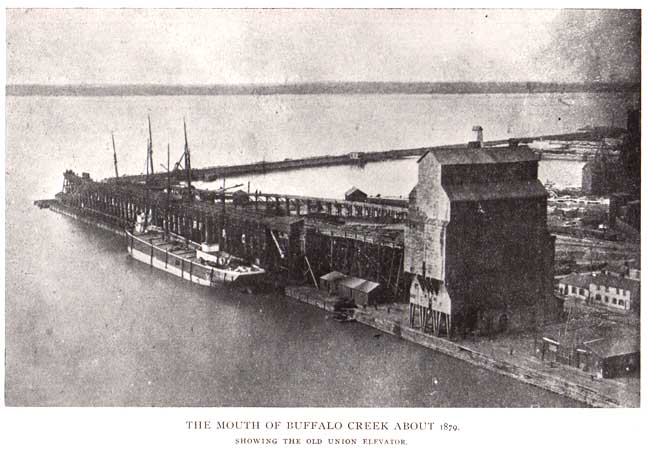 Union. Source: The Picture Book of Earlier Buffalo, Frank H. Severance, ed. Buffalo Historical Society Publications, Vol. 16, 1912, p. 36 (Digitized) |
| Washburn Crosby See: Historic Photos - Industrial Heritage Trail Signage |
Watson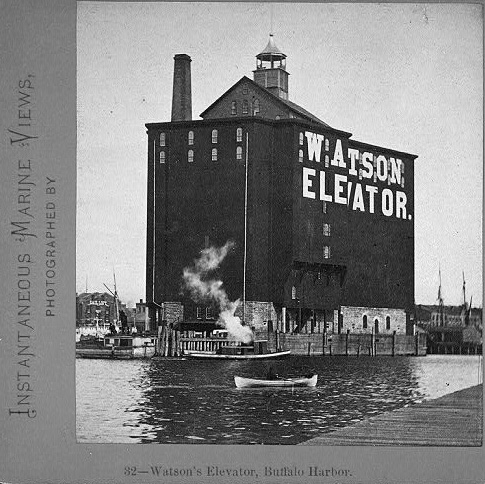 Watson Source: Robert Dennis Collection of Stereoscopic Views  Watson Source: Map on display at the Buffalo History Museum 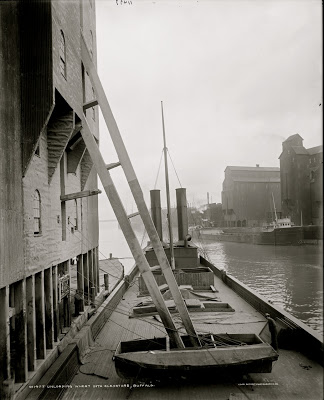 Watson Marine leg unloading a ship. |
Wells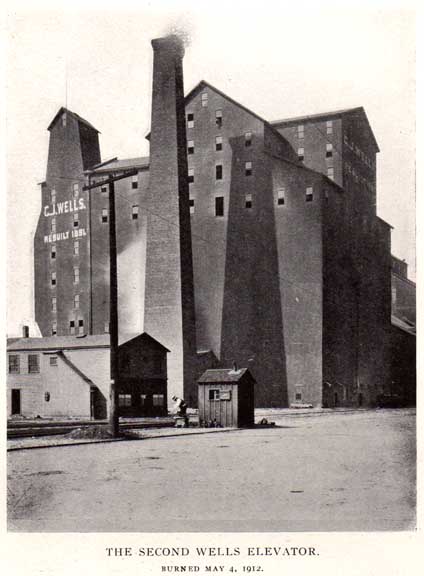 Wells Source: The Picture Book of Earlier Buffalo, Frank H. Severance, ed. Buffalo Historical Society Publications, Vol. 16, 1912, p. 40 (Digitized) |
| See: Historic Photos - Industrial Heritage Trail Signage |
Wollenberg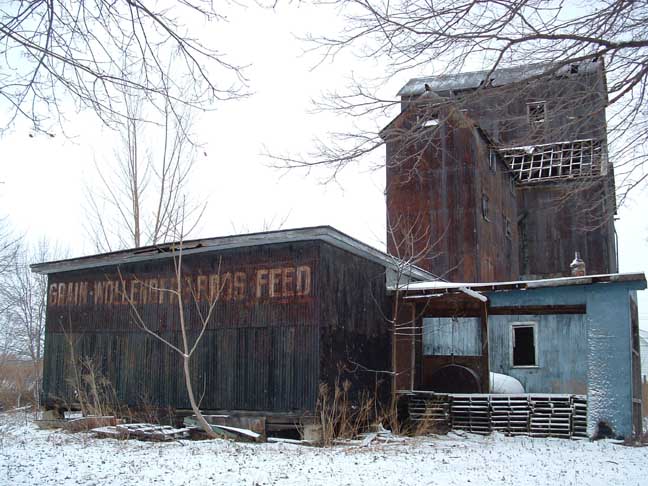 Wollenberg Grain & Seed Elevator, 133 Goodyear Avenue |
